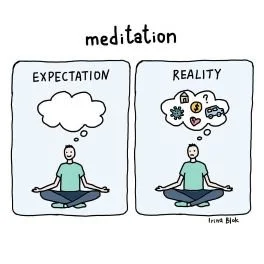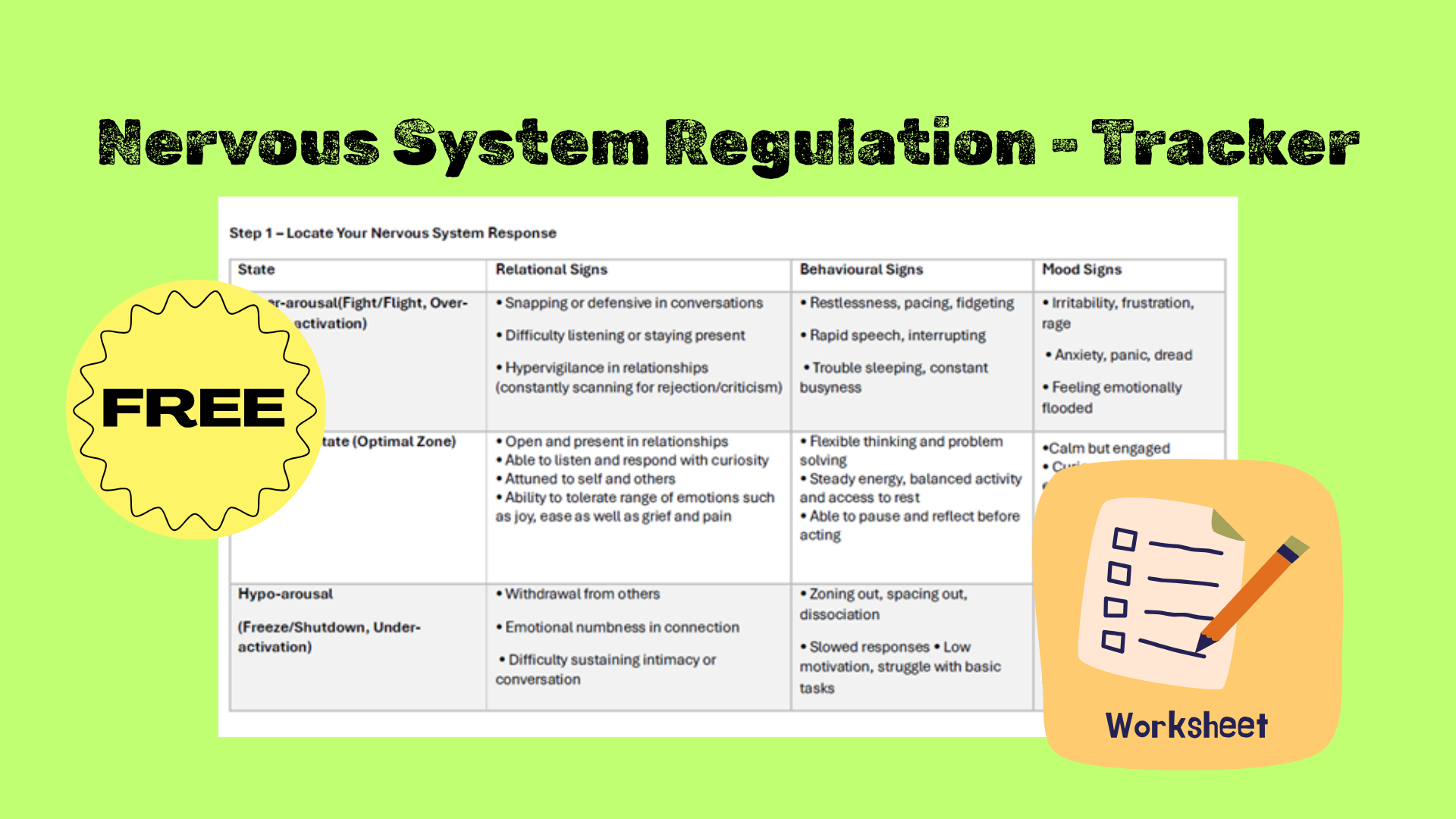Why Deep Breathing Doesn’t Calm Anxiety
If you’ve ever tried to calm down with deep breathing or meditation in a highly anxious state, and felt like it didn’t help (or made things worse), you’re not alone. The truth is, in those moments, “just breathe” or “ just try to meditate” often doesn’t work — and there’s a reason why.
image credit: https://www.irinablok.com/
It comes down to nervous system regulation. In simple terms, this is how your body shifts between states of high stress, calm or presence, and shutdown. Each of us has what’s called a window of tolerance — the range where we can manage stress, stay present, and feel grounded. When anxiety pushes us out of that window into hyperarousal (racing thoughts, spiraling energy) or hypoarousal (numb, shut down), strategies like deep breathing or meditation can feel impossible.
Trying to meditate in the middle of a panic surge is like slamming on the brakes of a car going 130 km/h. Your system can’t stop on command — it needs to slow down gradually.
That’s why it’s more helpful to start with practices that meet your body where it is.
Instead of forcing this idea of being “calm”, we can engage the body directly, by moving, grounding, using sensory inputs — to help bring us back into our 'window of tolerance'.
Instead of fixating on mindfulness, I like to use a more generous somatic reframe of bodyfulness. Bodyfulness expands the idea of awareness to include the whole body. It’s about being present and aware of our sensations, movements, and rhythms that help us feel more alive, grounded, and connected.
I’ve created a FREE downloadable guide to help you map your own window of tolerance and explore practices for both hyperarousal (high anxiety, spiraling ) and hypoarousal (low energy, shutdown).
BONUS: This guide ALSO explores how activism can support our nervous system. It can help release extra energy when we feel on edge, gently bring us back into connection when we feel shut down, and sustain a sense of purpose when we feel steady—reminding us that we are built for connection, not isolation.
These somatic resources aren’t a replacement for therapy, but they can help with symptom management to move through overwhelming moments, so we can feel our emotions safely and clarify our needs better.
A regulated nervous system doesn’t mean we’re always calm or peaceful. It means we can handle life’s ups and downs with more flexibility, moving through stress without getting stuck in overwhelm or shutting down.
Meditation is a valuable skill, but like any practice, it works best when we’re already within or close to our window of tolerance. If you’ve struggled with it during high anxiety, it doesn’t mean you’re doing it wrong — it just means your body needs a different starting point.
FREE Community & Embodied Resources
Inspiration for this post: Rachel Pfeiffer’s piece helped spark this blog and share my toolkit, reminding us that responding to anxiety is not as simple as “just take a deep breath.”
Understanding the Window of Tolerance: This guide from Mind My Peelings is one of my go-to resources for clients who are learning how to map and regulate their nervous system.
Alternatives to meditation: If you’re looking for practices beyond traditional meditation, ISMETA offers a free weekly online moving meditation session — a wonderful way to explore mindful movement in community:
Sensorimotor Psychotherapy Practices: Somatic exercises to help regulate emotions, build presence, and stabilize your nervous system.



